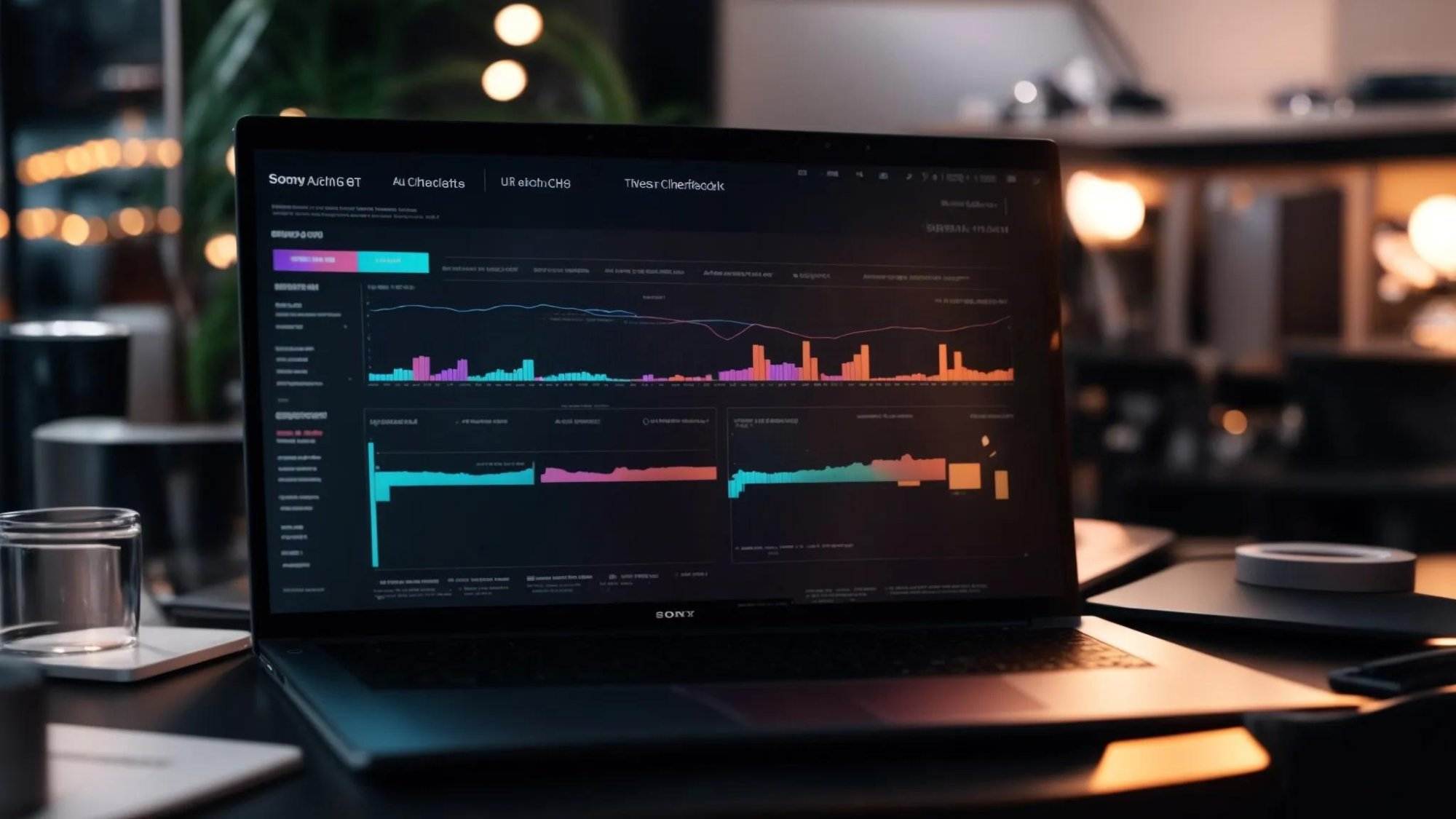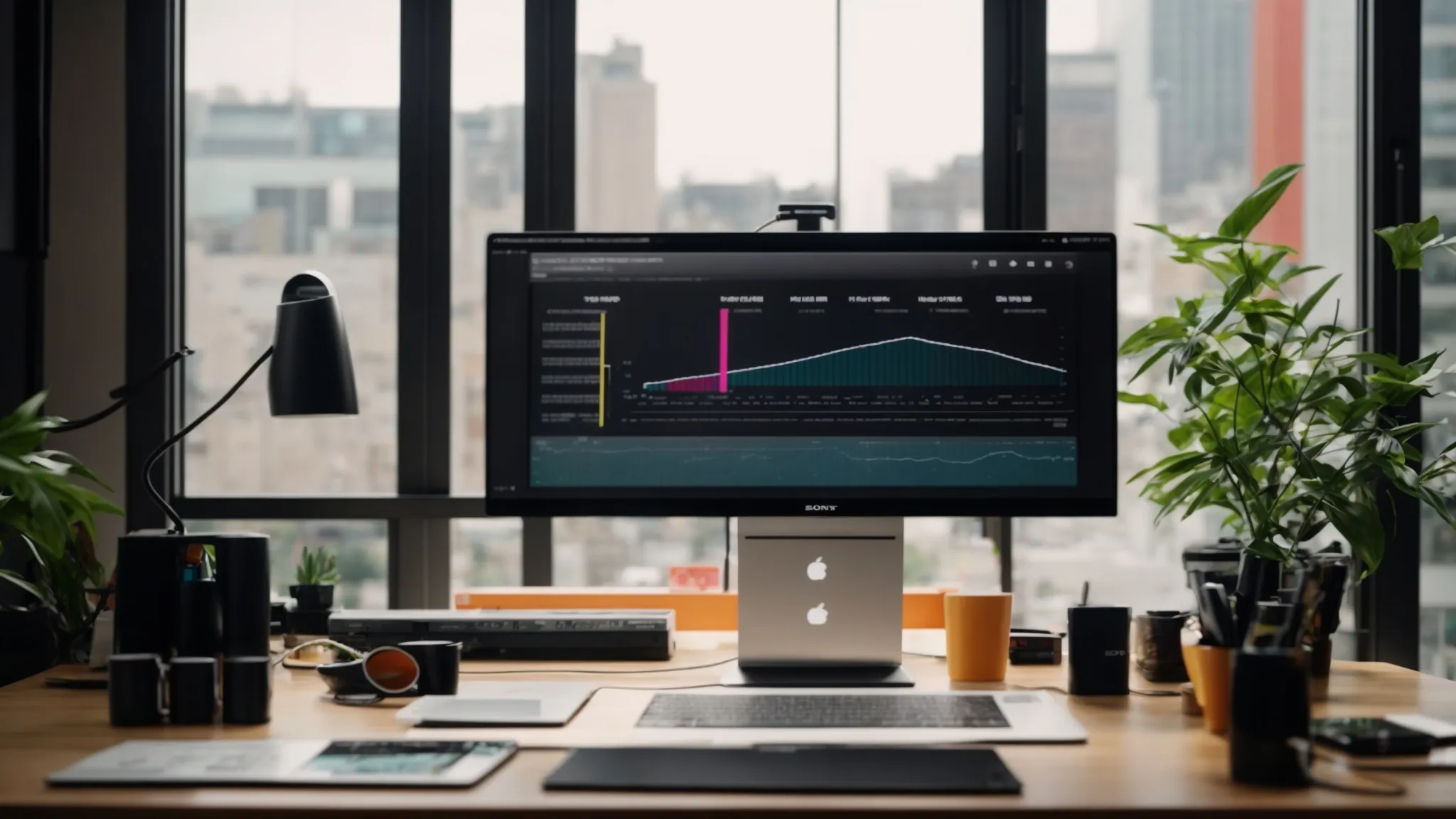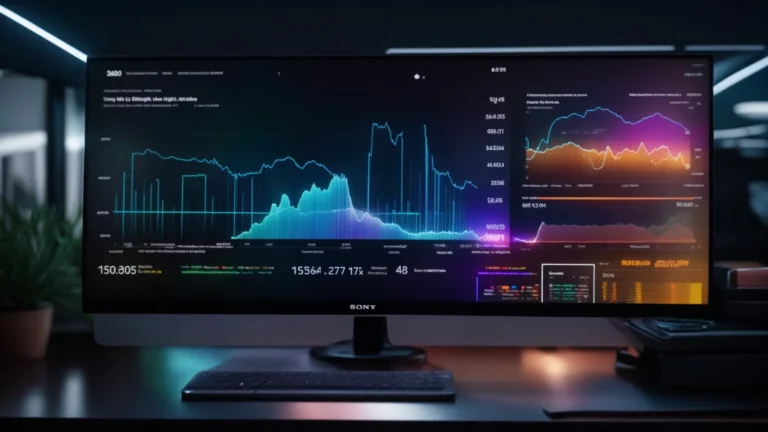Heads Up: When you purchase through links on our site, we may earn an affiliate commission at no cost to you.
Maximizing return on investment (ROI) is a top priority for businesses using SEO and digital marketing. One of the most effective ways to achieve this is by focusing on high-intent keywords—search terms indicating a user is ready to take action, whether by purchasing, signing up for a service, or requesting more information.
Unlike general keyword research, which includes a mix of informational and navigational keywords, high-intent keywords target users further along the buyer’s journey. These keywords have lower search volume than broad terms but deliver significantly higher conversion rates, leading to better search engine rankings and more efficient advertising spending.
This guide will explain high-intent keywords, how to identify them using Google Analytics, Google Search Console, and SEMrush, and how to integrate them into an SEO strategy that increases organic traffic and drives revenue.
Key Takeaways
- High-intent keywords drive conversions. Unlike informational keywords, high-intent keywords attract users ready to take action, improving SEO rankings and ROI.
- The types of high-intent keywords matter: Transactional, commercial investigation, and navigational keywords all serve different roles in the buyer’s journey and should be used strategically.
- SEO tools help identify high-intent keywords. Platforms like Google Search Console, SEMrush, and Google Ads provide insights into high-performing search terms and user intent.
- Content optimization is key. High-intent keywords should be strategically placed on landing pages, blog content, and CTAs to improve user engagement and conversions.
- Avoid common keyword targeting mistakes: Overloading content with transactional keywords, ignoring long-tail variations, or misaligning keywords with search intent can harm SEO performance.
- Performance tracking ensures long-term success. Businesses must monitor CTR, bounce rate, and conversion rates using Google Analytics and heatmaps to refine their high-intent keyword strategy.
- Keyword strategy should evolve. To ensure continued SEO success, update keyword clusters regularly, expand on high-converting keywords, and test new variations.
What Are High Intent Keywords?

Understanding High Intent Keywords
High-intent keywords are search terms that signal a strong user intent to take action. Unlike informational keywords, which users search for when researching a topic, high-intent keywords indicate that a person is closer to purchasing or committing to a service.
Key characteristics of high-intent keywords include:
- They demonstrate transactional intent, meaning the user is prepared to buy or make a decision.
- They often contain action-driven words like buy, discount, near me, free trial, and best price.
- They generate higher conversion rates since they target users actively looking for solutions.
For example, consider these two search queries:
- Low intent keyword: “best dog food brands” – This user is still researching and comparing options.
- High intent keyword: “buy grain-free dog food online.” – This user is ready to purchase.
By incorporating high-intent keywords into their SEO strategy, businesses can attract qualified leads, reduce wasted advertising spending, and improve their overall return on investment (ROI).
Types of High-Intent Keywords
There are three primary types of high-intent keywords, each corresponding to different customer journey stages.
Transactional Keywords
- These keywords indicate a clear purchase intent and are often used in e-commerce and service-based industries.
- Examples:
- “Buy oven online”
- “Best price for home insurance”
- “Apply for a credit card with no fees”
- “Buy oven online”
- “Best price for home insurance”
- “Apply for a credit card with no fees”
Commercial Investigation Keywords
- Users searching for these keywords are comparing options before making a decision. They are close to converting but want more details.
- Examples:
- “Best SEO agency for small businesses”
- “Top-rated laptops for digital marketing”
- “Google Ads vs. Facebook Ads cost comparison”
- “Best SEO agency for small businesses”
- “Top-rated laptops for digital marketing”
- “Google Ads vs. Facebook Ads cost comparison”
Navigational Keywords
- These keywords are used when a user wants to go directly to a specific website or service page.
- Examples:
- “HubSpot pricing”
- “Google Search Console login”
- “SEMrush keyword research tool”
- “HubSpot pricing”
- “Google Search Console login”
- “SEMrush keyword research tool”
Understanding these keyword types allows businesses to structure their content marketing strategy effectively. This ensures their landing pages, blog posts, and advertising campaigns align with users’ needs at various conversion funnel stages.
- Instant feedback
- Valuable insights
- Actionable tips
The Role of High Intent Keywords in SEO and Marketing

High intent keywords are crucial for businesses looking to improve their search engine rankings, attract qualified leads, and increase return on investment (ROI). Unlike general search terms, these keywords connect businesses with users actively searching for a solution, product, or service, making them essential for organic SEO strategies and paid advertising campaigns.
How High Intent Keywords Improve Organic Search Rankings
Search engines like Google prioritize content that aligns with user intent. Businesses can improve their search engine results page (SERP) rankings and increase organic traffic by optimizing for high intent keywords.
- Relevance to User Queries: High intent keywords ensure a web page aligns with search behavior, improving click-through rates (CTR) and engagement.
- Reduced Bounce Rate: Since users find exactly what they’re looking for, they are more likely to stay on a website rather than leave immediately.
- Improved Internal Linking Opportunities: Structuring content around high intent keywords allows businesses to create content silos that improve site navigation.
For example, a page optimized for “best home insurance rates 2024” is more likely to rank higher and attract users with strong purchase intent than a generic keyword like “home insurance.”
High Intent Keywords and Paid Advertising
Google Ads, Facebook Ads, and other pay-per-click (PPC) advertising platforms rely on high intent keywords to generate better ROI.
- Lower Cost-Per-Click (CPC): Ads targeting buyer-intent keywords are often more effective, leading to lower wasted ad spending.
- Higher Conversion Rates: Users clicking on ads with transactional intent keywords are likelier to complete a purchase or inquiry.
- Better Ad Relevance Score: Platforms like Google Ads reward businesses that use highly relevant keywords, leading to improved ad rankings and lower costs.
For instance, an ad campaign promoting “buy car insurance online now” will likely yield better results than one promoting “how car insurance works.”
How High Intent Keywords Improve Return on Investment (ROI)
The ultimate goal of SEO and digital marketing is to generate measurable ROI. High intent keywords contribute to higher sales and revenue by:
- Attracting Ready-to-Buy Customers: These keywords connect businesses with users actively searching for a product or service.
- Optimizing Marketing Spend: Businesses can allocate their advertising budget more effectively by focusing on keywords with proven conversion rates.
- Increasing Sales Funnel Efficiency: Since high intent keywords target users further down the conversion funnel, they shorten the customer journey.
For example, a credit card company focusing on “apply for a no-fee credit card online” will drive more conversions than one targeting broader terms like “credit card benefits.”
By integrating high intent keywords into organic SEO and paid advertising, businesses can improve customer acquisition, increase visibility, and generate long-term revenue growth.
How to Identify and Research High Intent Keywords

Finding the right high intent keywords requires a strategic approach to keyword research. Businesses must analyze search behavior, evaluate competition, and leverage SEO tools to ensure they target users ready to take action.
Conducting Keyword Research with SEO Tools
The most effective way to find high intent keywords is using SEO research tools that provide data-driven insights.
- Google Search Console: Helps identify high-converting keywords that drive traffic to your site.
- SEMrush and Ahrefs Provide competitor analysis, allowing businesses to see what high-intent keywords their competitors rank for.
- Google Ads Keyword Planner: Shows search volume and competition levels for transactional and commercial intent keywords.
- HubSpot & Ubersuggest: Help discover long-tail buyer intent keywords with lower competition.
How to Use SEMrush for High Intent Keyword Research
- Enter a seed keyword related to your business.
- Filter for transactional and commercial intent terms.
- Analyze keyword difficulty, search volume, and CPC (cost-per-click) to determine potential ROI.
- Export the results into a spreadsheet and group similar terms for content strategy planning.
Leveraging Google Autocomplete and Search Behavior Data
Google Autocomplete is an effective way to discover high intent keywords based on real user searches. By typing a keyword into Google Search, businesses can see predictive suggestions that indicate buyer intent.
For example, typing “best laptop for” may show:
- “best laptop for content creators”
- “best laptop for digital marketing”
- “best laptop for SEO professionals”
Each of these terms has clear commercial intent, meaning users searching for them actively compare products before purchasing.
Additionally, Google Analytics helps businesses analyze:
- Search behavior trends to identify conversion-driven keywords.
- Bounce rate and session duration to understand which keywords lead to engagement.
- Landing page performance to determine which high intent keywords drive revenue.
Competitive Keyword Research and Insights
Analyzing competitor keyword strategies allows businesses to identify gaps and opportunities in their SEO campaigns.
- Reverse-engineering competitors’ top-performing pages using SEMrush or Ahrefs reveals the high intent keywords they rank for.
- Evaluating paid search campaigns through Google Ads Auction Insights helps identify keywords that lead to conversions.
- Checking backlink profiles of competitor sites provides insight into how they use high-intent keywords in content marketing and link-building strategies.
By focusing on competitive keyword research, businesses can refine their content marketing strategy, target buyer-ready search queries, and increase SEO-driven conversions.
Optimizing Content for High Intent Keywords

Once you have identified high intent keywords, the next step is optimizing your content strategy to maximize search engine visibility, improve user experience, and drive higher conversions. Properly integrating these keywords into landing pages, blog content, and paid campaigns ensures businesses reach the right audience at the right time.
Creating Content That Matches Buyer Intent
High-intent keywords should align with search behavior and be strategically placed in content that serves the user’s needs.
- Landing Pages: Transactional keywords like “buy,” “discount,” and “best price” work best on sales-driven landing pages.
- Blog Content: Commercial investigation keywords such as “best product for” or “top-rated” should be featured in comparison articles and product guides.
- Product & Service Pages: Keywords indicating specific buying intent, such as “apply now,” “schedule a demo,” or “get a free quote”, should be prominently placed in CTA buttons and headings.
For example, a page targeting “best insurance for small businesses” should include:
- A compelling introduction that immediately answers the search query.
- A detailed comparison of different insurance providers with pros and cons.
- Clear CTA buttons like “Get a Free Quote” or “Compare Plans Now.”
Enhancing SEO with Backlinks and Internal Linking
Using high intent keywords in internal linking structures and backlink strategies helps improve search rankings and strengthens website authority.
- Internal Linking: Pages optimized for high intent keywords should link to supporting content that answers related questions.
- Backlink Building: Earning links from authoritative sources for content that ranks for transactional or commercial intent keywords improves SEO performance.
For instance, a real estate website targeting “buy a home in Los Angeles” could internally link to:
- A guide on “Best Mortgage Options for First-Time Homebuyers.”
- A blog post about “How to Get Pre-Approved for a Home Loan.”
Measuring and Refining Your Strategy
Businesses must continuously track their SEO performance to ensure high intent keywords generate leads and sales. Using tools like Google Analytics, Google Search Console, and SEMrush, businesses can:
- Monitor conversion rates from high intent keyword-driven pages.
- Adjust content structure based on bounce rates and session durations.
- Expand on successful keyword clusters by adding supporting content.
By refining content around high-sentence search terms, businesses can improve organic rankings, increase website traffic, and maximize their ROI.
Common Mistakes to Avoid When Targeting High Intent Keywords

Targeting high intent keywords can significantly improve SEO rankings, conversion rates, and ROI, but improper execution can reduce effectiveness. Businesses must avoid common mistakes that can undermine their content marketing strategy and impact search engine performance.
Over-Optimizing for Transactional Keywords
Focusing too much on transactional keywords without offering valuable content can lead to keyword stuffing and a poor user experience.
- Why This is a Problem:
- Pages overloaded with buy now, apply here, or get a quote keywords may appear spammy.
- Google’s algorithm penalizes content that prioritizes keywords over quality.
- Users may be turned off by content that lacks informational value.
- How to Fix It:
- Balance transactional keywords with informative and engaging content.
- Use high intent keywords naturally in headings, CTAs, and body text.
- Ensure pages provide value, such as detailed product comparisons or case studies.
- Pages overloaded with buy now, apply here, or get a quote keywords may appear spammy.
- Google’s algorithm penalizes content that prioritizes keywords over quality.
- Users may be turned off by content that lacks informational value.
- Balance transactional keywords with informative and engaging content.
- Use high intent keywords naturally in headings, CTAs, and body text.
- Ensure pages provide value, such as detailed product comparisons or case studies.
For example, instead of stuffing “buy laptop online” repeatedly, a better approach would be:
- H1: Best Laptops for Digital Marketing in 2024
- H2: Where to Buy the Best Laptop for Your Needs
- CTA: Compare Prices and Find the Best Deals
Ignoring Long-Tail Variations
Many businesses focus only on short, high-volume keywords and ignore long-tail, high-intent keywords, missing opportunities to capture targeted search traffic.
- Why This is a Problem:
- Short-tail keywords are highly competitive and harder to rank for.
- Long-tail keywords often have higher conversion rates since they target specific buyer intent.
- How to Fix It:
- Identify keywords relevant to long-tail buyer intent using Google Autocomplete, Google Ads Keyword Planner, and SEMrush.
- Optimize landing pages and blog content with question-based and location-specific long-tail keywords.
- Structure content around search queries like:
- “Best budget laptop for content creators”
- “How to apply for a no-fee credit card online”
- Short-tail keywords are highly competitive and harder to rank for.
- Long-tail keywords often have higher conversion rates since they target specific buyer intent.
- Identify keywords relevant to long-tail buyer intent using Google Autocomplete, Google Ads Keyword Planner, and SEMrush.
- Optimize landing pages and blog content with question-based and location-specific long-tail keywords.
- Structure content around search queries like:
- “Best budget laptop for content creators”
- “How to apply for a no-fee credit card online”
- “Best budget laptop for content creators”
- “How to apply for a no-fee credit card online”
Misaligning Keywords with User Intent
Using high intent keywords without aligning them to the correct search intent can reduce engagement and affect SEO rankings.
- Why This is a Problem:
- Informational queries should not lead directly to sales pages.
- Transactional keywords should be used on pages designed to convert users.
- Misalignment leads to high bounce rates and lower conversion rates.
- How to Fix It:
- Categorize keywords based on intent:
- Informational: Blog posts, guides, FAQs.
- Commercial Investigation: Product comparisons, reviews.
- Transactional: Landing pages, sign-up forms, checkout pages.
- Optimize URLs, headings, and meta descriptions to reflect searcher intent.
- Ensure landing pages align with user expectations to encourage actionable conversions.
- Categorize keywords based on intent:
- Informational queries should not lead directly to sales pages.
- Transactional keywords should be used on pages designed to convert users.
- Misalignment leads to high bounce rates and lower conversion rates.
- Categorize keywords based on intent:
- Informational: Blog posts, guides, FAQs.
- Commercial Investigation: Product comparisons, reviews.
- Transactional: Landing pages, sign-up forms, checkout pages.
- Optimize URLs, headings, and meta descriptions to reflect searcher intent.
- Ensure landing pages align with user expectations to encourage actionable conversions.
- Informational: Blog posts, guides, FAQs.
- Commercial Investigation: Product comparisons, reviews.
- Transactional: Landing pages, sign-up forms, checkout pages.
For example, a user searching for “best SEO agency for small businesses” expects a comparison guide, not a sales pitch. Instead of directing them to a contact form, businesses should offer a detailed service comparison and introduce the CTA naturally.
By avoiding these common mistakes, businesses can refine their high intent keyword strategy, improve user experience, and increase conversion rates.
Measuring the Success of High Intent Keyword Strategy

Implementing high intent keywords is only the first step. To ensure they contribute to increased search engine rankings, organic traffic, and ROI, businesses must track their performance metrics and refine their SEO strategy based on data insights.
Tracking Conversions and User Engagement
Using analytics tools helps businesses measure how effectively high intent keywords drive conversions. Key metrics to track include:
- Organic Traffic: Monitor visitor increases from search engine results pages (SERPs).
- Click-Through Rate (CTR): Higher CTR indicates that meta descriptions and page titles align with search intent.
- Bounce Rate: A high bounce rate may suggest that landing pages do not meet user expectations.
- Time on Page & Session Duration: Longer session durations indicate that visitors are engaged with the content.
- Conversion Rate: This measures the number of visitors who take the desired action (e.g., purchasing, signing up, or requesting a quote).
How to Use Google Analytics for Performance Tracking
- Navigate to Acquisition > Search Console > Queries to view the keywords driving traffic.
- Check Landing Page Performance under Behavior > Site Content to analyze which pages convert best.
- Monitor bounce rate and user behavior to ensure that high-intent pages engage visitors.
If a landing page optimized for “apply for business credit card” is driving traffic but has a low conversion rate, it may require:
- A clearer CTA like “Apply Now – No Hidden Fees.”
- Improved page speed and mobile optimization.
- More trust signals, such as testimonials and security badges.
Refining and Scaling Your Keyword Strategy
SEO is an ongoing process, and businesses must continually adjust their keyword strategy to maximize effectiveness.
- Expand on High-Performing Keywords: If a keyword like “best insurance for freelancers” is converting well, create supporting content like:
- “How to Choose the Right Insurance Plan for Your Business”
- “Freelancer Insurance Cost Breakdown: What to Expect”
- Test New Keyword Variations: Use Google Ads A/B testing to find variations that improve conversion rates.
- Adjust Content Based on Search Trends: Monitor Google Trends, competitor strategies, and industry updates to stay ahead.
- “How to Choose the Right Insurance Plan for Your Business”
- “Freelancer Insurance Cost Breakdown: What to Expect”
Using Heatmaps and User Behavior Analysis
Tools like Hotjar and Microsoft Clarity allow businesses to visualize how users interact with pages optimized for high intent keywords.
- Heatmaps show where users click the most, helping businesses effectively position CTAs and key content elements.
- Session Recordings reveal user frustrations, such as slow load times or unclear navigation, which can affect conversion rates.
By regularly analyzing performance data, businesses can refine their SEO strategy, optimize high-intent keywords, and drive higher revenue and ROI.
Frequently Asked Questions
What are high intent keywords?
High intent keywords are search terms that indicate a user is ready to take action, such as making a purchase, signing up for a service, or requesting a quote. They often contain transactional phrases like “buy,” “apply now,” or “best price.”
How do high intent keywords improve SEO?
These keywords help businesses attract qualified leads, increase conversion rates, and improve organic search rankings by aligning with user intent and search behavior.
What tools can I use to find high intent keywords?
Popular tools include Google Search Console, SEMrush, Google Ads Keyword Planner, and Ahrefs. These provide keyword insights, competition analysis, and search intent data.
Where should high intent keywords be placed?
High-intent keywords should be included in page titles, meta descriptions, headings, content bodies, and CTAs on landing and product pages to drive conversions.
What is the difference between high intent and low intent keywords?
High-intent keywords indicate that a user is close to deciding, while low-intent keywords are more informational and typically used in the research phase.
How often should I update my keyword strategy?
It is recommended that you review and update your keyword strategy every three to six months to keep up with search trends, competition, and changes in user behavior.
Can high intent keywords work for both SEO and paid advertising?
Yes, high-intent keywords are effective for both organic search and paid campaigns. They target users who are ready to take action and improve conversion rates in both areas.
Conclusion
Mastering high-intent keywords is essential for businesses seeking to increase search engine rankings, improve organic traffic, and maximize return on investment (ROI). By targeting users ready to take action, businesses can drive higher conversion rates and reduce wasted marketing spending.
Businesses can consistently refine their high intent keyword strategy to attract highly qualified leads, improve SEO performance, and generate long-term revenue growth.
Now that you have a structured approach to high-intensity keyword optimization, it’s time to apply these insights, refine your content, and increase your search engine visibility and conversions.












